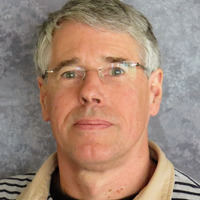The abstract concept of indeterministic free will is distinguished from the phenomenon of free will. Evidence for the abstract concept is examined and critically compared with various designs of automata. It is concluded that there is no... more
The abstract concept of indeterministic free will is distinguished from the phenomenon of free will. Evidence for the abstract concept is examined and critically compared with various designs of automata. It is concluded that there is no evidence to support the abstract concept of indeterministic free will, it is inconceivable that a test could be constructed to distinguish an indeterministic agent from a complicated automaton. Testing the free will of an alien visitor is introduced to separate prejudices about who has free will from objective experiments. The phenomenon of free will is modelled with a deterministic decision making agent. The agent values ‘independence’ and satisfies a desire for independence by responding to ‘challenges’. When the agent generates challenges internally it will establish a record of being able to do otherwise. In principle a computer could be built with a free will property. The model also explains false attributions of free will (superstitions).
Research Interests: Computer Science, Philosophy, Epistemology, Philosophy of Property, Free Will, and 5 moreQC, Bj, Bf, BC, and Phenomenon
Research Interests:
Research Interests:
Research Interests:
Research Interests:
Research Interests:
Research Interests:
Research Interests:
Research Interests:
Research Interests:
The practice of setting quantum fields as sources for classical general relativity is examined. Several conceptual problems are identified which invalidate apparently innocuous equations. Alternative ways to links classical general... more
The practice of setting quantum fields as sources for classical general relativity is examined. Several conceptual problems are identified which invalidate apparently innocuous equations. Alternative ways to links classical general relativity with quantum theory using Bohm's theory are proposed.
Research Interests:
It is shown that certain structures in classical General Relativity can give rise to non-classical logic, normally associated with Quantum Mechanics. A 4-geon model of an elementary particle is proposed which is asymptotically flat,... more
It is shown that certain structures in classical General Relativity can give rise to non-classical logic, normally associated with Quantum Mechanics. A 4-geon model of an elementary particle is proposed which is asymptotically flat, particle-like and has a non-trivial causal structure. The usual Cauchy data are no longer sufficient to determine a unique evolution. The measurement apparatus itself can impose non-redundant boundary conditions. Measurements of such an object would fail to satisfy the distributive law of classical physics. This model reconciles General Relativity and Quantum Mechanics without the need for Quantum Gravity. The equations of Quantum Mechanics are unmodified but it is not universal; classical particles and waves could exist and there is no graviton.
Research Interests: Physics, Quantum Physics, Quantum Gravity, General Relativity, Quantum Cosmology, and 10 moreQuantum Mechanics, Non-Classical Logic, Relativistic Quantum Mechanics, Classical Physics, Classical Mechanics, Graviton, Boolean Satisfiability, Boundary Condition, Elementary Particles, and Distributive law
Research Interests: Physics, Quantum Physics, General Relativity, Quantum Mechanics, Closed Timelike Curves, and 10 moreQuantum Logic, Philosophy and Religious Studies, Mathematical Sciences, Theory of Relativity, Physical sciences, Relational Quantum Mechanics, QC, Boolean Satisfiability, General Relativity and Quantum Cosmology, and Geons
Research Interests:
Research Interests:
Research Interests:
A number of experimental tests of time orientability are described as well as clear experimental signatures from non time orientability (time reversal). Some tests are well known, while others are based on more recent theoretical work.... more
A number of experimental tests of time orientability are described as well as clear experimental signatures from non time orientability (time reversal). Some tests are well known, while others are based on more recent theoretical work. Surprisingly, the results all suggest that time is not orientable at a microscopic level; even definitive tests are positive. At a microscopic level the direction of time can reverse and a consistent forward time direction cannot be defined. That is the conclusion supported by a range of well-known experiments. The conflict between quantum theory and local realism; electrodynamics with electric charges; and spin half transformation properties of fermions; can all be interpreted as evidence of time reversal. While particle-antiparticle annihilation provides a definitive test. It offers both a new view of space-time and an novel interpretation of quantum theory with the potential to unify classical and quantum theories.
